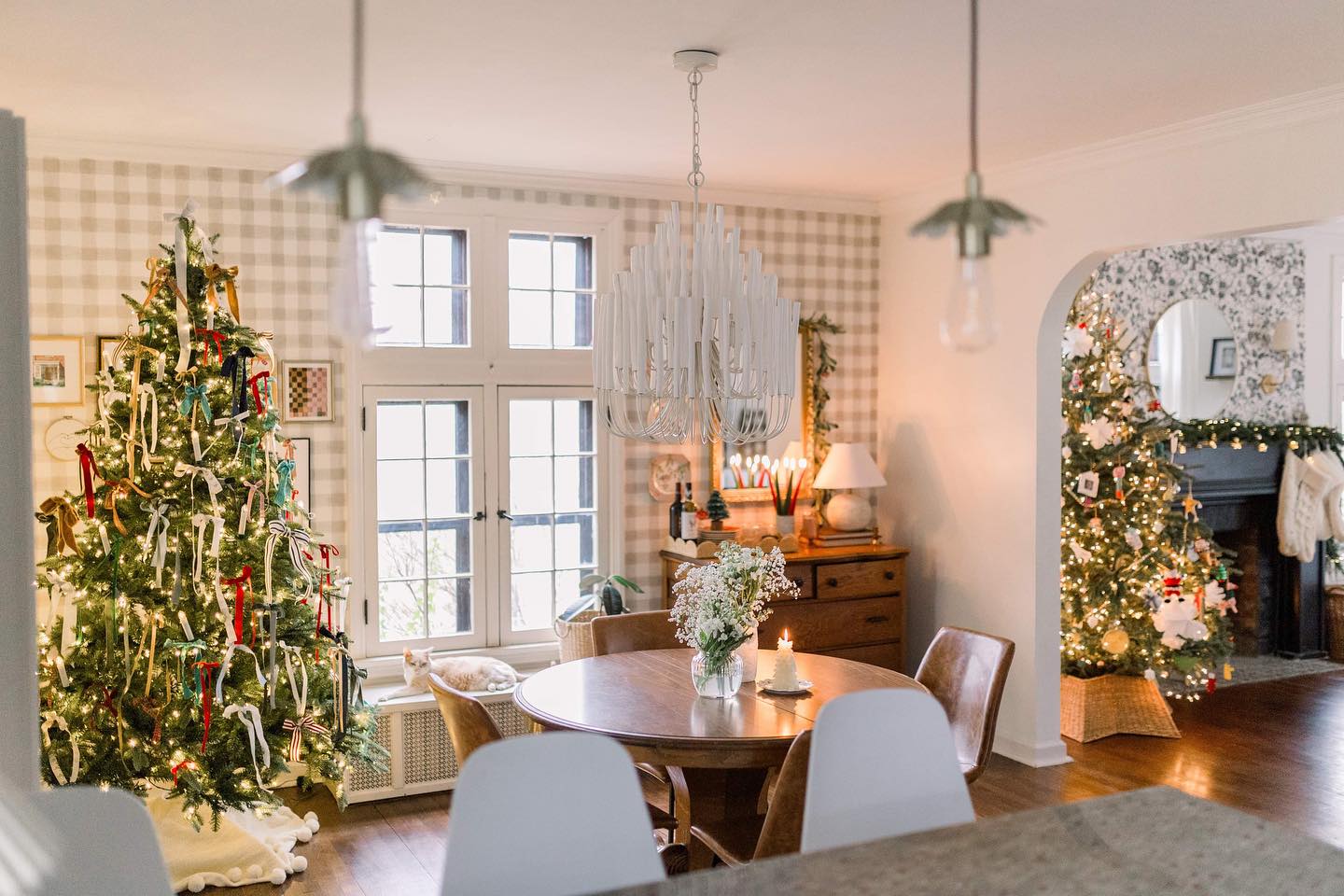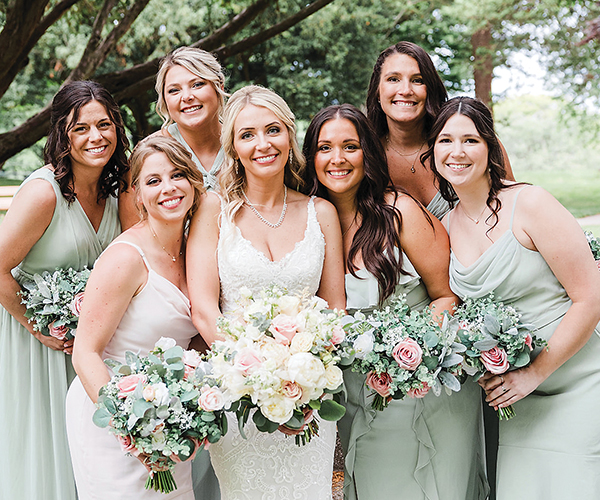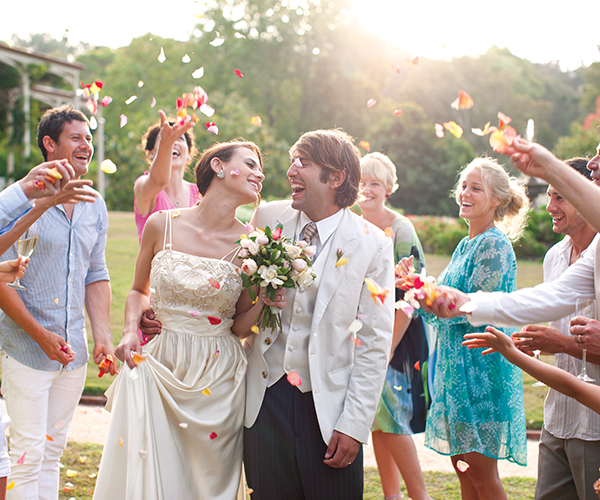Fresh Air, New Ideas
by Lynne Thompson | Feb. 21, 2012 | 5:00 AM
Last Fall, you packed away the lawn mower and garden tools and breathed a heartfelt "good riddance" to your annual battle with nature. But now you can't help thinking about plants to beautify your backyard or ways to create an enjoyable family retreat once summer blooms. Whether your plans are big or you want to start small, here are a dozen ideas to inspire you.
1. Go for a cool pool:
Rectangular pools have become sort of square. Jay Schwartz, vice president of the Chagrin Falls-based Ohio Valley Group, says free-form pools with water tumbling over outcroppings and natural rock are replacing the traditional backyard-pool design. One project his company worked on featured a waterfall wall approximately 15 feet long and 4 feet high. "The water came out from five different locations through the natural rock," he says. Possibilities are limited only by your imagination and your community's building codes.
2. Don't waste rainwater.
A soggy backyard spot does not always require a drain to solve the problem. Jonas Pattie, executive vice president of The Pattie Group in Novelty, says several of his clients have chosen to plant rain gardens — areas of water-loving trees, shrubs and plants that absorb precipitation naturally. Other conservation-minded ideas include installing a rain barrel or cistern and using the runoff from rooftops, driveways and other paved areas to irrigate lawns and gardens. Such moves often have as much to do with the cost of letting water go down the drain as the price of drawing it from the tap. "Municipalities are going to start putting taxes on sewer bills and water runoff — those things are already happening," Pattie says. "In order to save money, homeowners are going to have to conserve water."
3. Take interior touches outside.
Although a home's architecture generally dictates landscaping choices, interior details should be considered when making decisions about decks and patios. "[The choices are] driven by details from inside the house," explains Mark Mazzurco, president of H&M Landscaping in Newbury. He adds that such consideration is crucial to achieving that desirable blurred line between indoor and outdoor spaces. To achieve the effect, Mazzurco often repeats floor patterns found inside a home in its outdoor spaces. The simple design of a carpet-border inlay, for example, can be approximated in the border of a paver patio. Similarly, the detail in a home's kitchen cabinetry should influence the design of a home's outdoor kitchen, bar or seating wall. Do it right, and you'll have an outdoor space that looks like it was planned when the home was built.
4. Go natural with stone.
Even facing a tough economy, many homeowners are requesting natural-stone patios, which are pricier than those built with stamped concrete or pavers. Jeff Rak, owner and president of Land Creations Landscaping in Columbia Station, says half his customers are going the natural route. He adds that Pennsylvania bluestone is one of the most common requests no matter the style of home because it's as durable as any paver. "Typically, you would have seen it outside a traditional home," Rak says. "But now, we're doing it outside homes that are more contemporary." He stresses the importance of proper installation to achieve a long-lasting result and warns against using slate and sandstone, which are prone to cracking. He also advises against laying limestone in shady areas of the backyard. "It can get moss growing on it, which makes it slippery," he says.
5. Consider LED lighting.
We've all heard the complaints that LED lighting is just too cold and sterile for home use. "Most clients didn't like the bluish-white light," says Joe Drake, president of J.F.D. Landscapes in Auburn Township. But manufacturers have now developed a warm white LED that's much more appealing and provides all the advantages of its traditional counterpart. The units, which are available in a range of styles, are also long-lasting, low maintenance and energy efficient and require none of the trenching needed for wiring incandescent lighting. That last point makes a big difference when you consider uses such as illuminating trees along a 600-foot-long driveway. All that's needed is to run a low-voltage line from a transformer at the house out to the road. "We could not have done that with incandescent light," Drake says.
6. Spice up your herb garden.
Your herb garden doesn't have to be a visually bland mix of green plants. Yes, basil, rosemary, oregano, parsley, chives and thyme are herb garden staples, but Alex Holocker, owner of Kingsview Landscape Co. in Sagamore Hills, suggests adding perennials such as catmint, bee balm, hostas and roses to make your herb garden as beautiful as it is functional. He suggests a 20-by-40-foot plot and says some people even incorporate a small water feature to create a space that delights the eyes and ears as much as the palate. "If you're cutting herbs, you're still enjoying the landscape," Holocker says. "You can cut a flower or two for the dinner table."
7. Camouflage your pavers.
If you don't like large areas of pavement of pavers, Cathy Serafin, a landscape architect with Suncrest Gardens in Peninsula, suggests permeable pavers. The product, sold under brand names such as Belgard's Turfstone, is installed like a traditional paver but has holes in it that can be filled with topsoil and then planted with grass. The result is a surface that is tough enough to park a car on but looks like lawn. It's particularly suited to properties that require extra parking next to a paved driveway to accommodate guests' vehicles when entertaining. "The maintenance is very, very easy," Serafin says. "You just mow it."
8. Amp up the color.
Ann Cicarella, of Ann Cicarella Landscape Design in Shaker Heights, has noticed that clients who once requested gardens awash in pastel pinks, blues and lavenders are now asking for flower beds exploding with fiery reds, mango oranges, sun-bright yellows and hot pinks. "Growers are developing all sorts of plants in really hot colors," she says, citing echinacea and begonia as examples. The adventurous can take the trend even further by decorating outdoor spaces with containers of tropical flowers. In the summer, the pots on Cicarella's patio feature bird of paradise, banana trees and other tropical plants. "You almost feel like you're away at some tropical resort," she says.
9. Putt around your yard.
There was a time when the cost of installing and maintaining a natural-grass putting green was impractical for anyone but the wealthiest homeowners. But Ohio Valley Group's Jay Schwartz says improvements in the appearance and quality of synthetic turf have put the backyard putting green — complete with custom undulations and multiple regulation-size cups surrounded by sand traps, rocks and rough — within many hardcore golfers' landscaping budgets. "The flags look great from the outside and inside [of the house] as well," Schwartz says. The putting green is best for a backyard of at least 2,000 square feet, according to Schwartz. He says the ideal size of the green is around 12-by-30 feet and adds that a landscape-design professional can help resolve issues such as how to maintain the natural grass that surrounds it.
10. Elevate your gardening.
Rooftop gardens are becoming a popular way to fight excessive water runoff in commercial buildings. The Pattie Group's Jonas Pattie says the same can be done at home if you have a flat roof. The most important consideration is the amount of weight a roof can bear. Proper drainage and plants that thrive in full sun and shallow soil are also required. Pattie recommends hiring a reputable builder to determine how much weight your roof can support and a landscape designer to plan and create the garden. "You just can't walk out on a tar roof and start putting stuff out there," he says. "There's a whole science to it, as well as an art."
11. Use common scents.
Don't underestimate the power of well-placed fragrant flowering plants. They can lure visitors down backyard paths and lead them to gathering areas. Plus, they just smell good. H&M Landscaping's Mark Mazzurco recommends planting a lineup of flowers that will bloom from early spring to first frost. For example, hyacinths offer a first whiff of perfume in early spring, followed by fragrant viburnums and lilacs. Roses and lavender begin yielding their scents in early summer, while summer-sweet and tardiva hydrangeas continue flowering into the fall. Use them all and you'll have a backyard that evolves throughout the season. "You're always going to have a little bit of change," Mazzurco says.
12. Warm up the backyard.
The fire bar, an alternative to the fire pit or outdoor fireplace, is an increasingly popular option for heating up your evening, according to Land Creations Landscaping's Jeff Rak. The hollow, stainless steel rod peppered with small holes is hooked up to a natural gas line, placed in a raised enclosure and then covered with decorative crushed glass that diffuses the flames. The range of available shapes and sizes makes the fire bar suitable for a number of outdoor uses, from generating heat to creating a dramatic fire-and-water feature. Rak has even run a fire bar through a groove in the middle of a granite-topped bar of an outdoor kitchen. "People can actually roast marshmallows over it if they want to," he says. "Or they can just use it as a small candle line."
Trending
-
1
-
2
-
3
-
4
-
5










